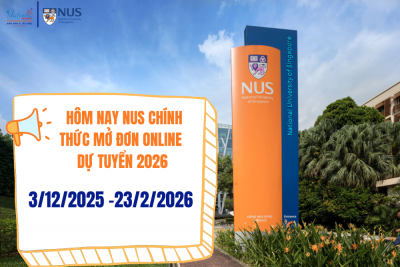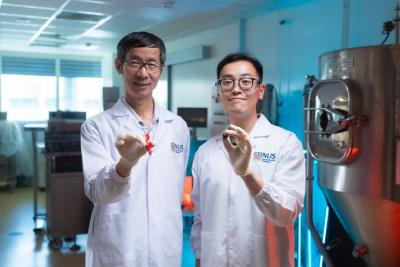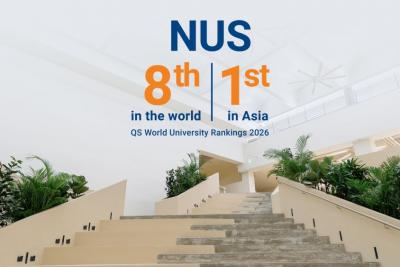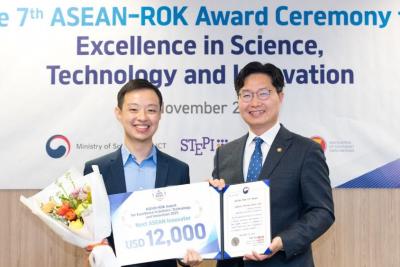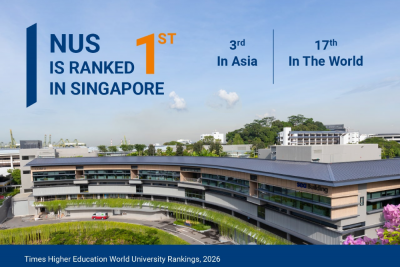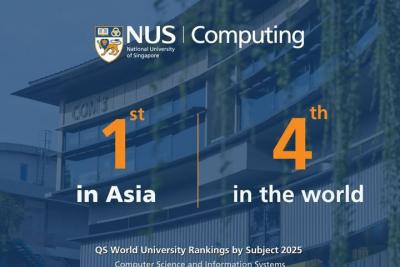Các nhà khoa học NUS đạt kỷ lục hiệu suất mới cho pin mặt trời perovskite nhờ phân tử thu ánh sáng hồng ngoại gần tiên tiến
New tandem solar cell design hits 26.4 per cent efficiency, outperforming the previous benchmark of 24.4 per cent for similar devices
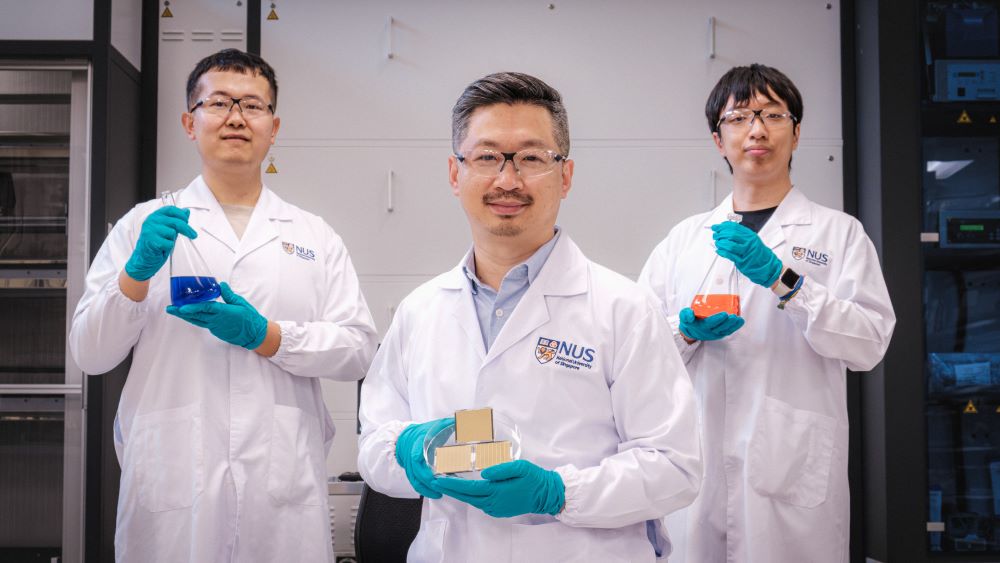
Innovators behind the solar breakthrough: Asst Prof Hou Yi (middle), Dr Jia Zhenrong (left), and Mr Guo Xiao (right).
Scientists at the National University of Singapore (NUS) have demonstrated a perovskite–organic tandem solar cell with a certified world-record power conversion efficiency of 26.4 per cent over a 1 cm2 active area — making it the highest-performing device of its kind to date. This milestone is driven by a newly designed narrow-bandgap organic absorber that significantly enhances near-infrared (NIR) photon harvesting, a long-standing bottleneck in thin-film tandem solar cells.
This latest research breakthrough was achieved under the leadership of Assistant Professor Hou Yi, who is a Presidential Young Professor in the Department of Chemical and Biomolecular Engineering under the College of Design and Engineering at NUS and leads the Perovskite-based Multijunction Solar Cells Group at the Solar Energy Research Institute of Singapore (SERIS) at NUS.
The NUS research team published their groundbreaking work in the prestigious scientific journal Nature on 25 June 2025.






